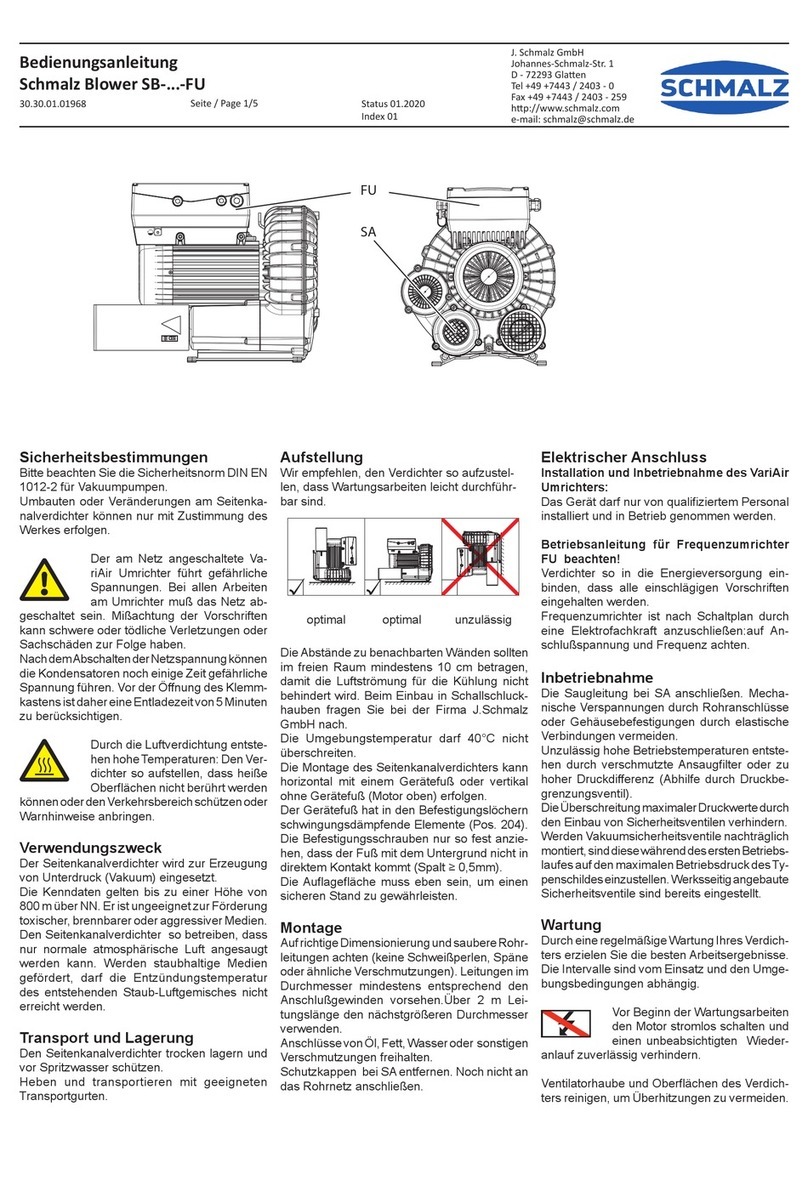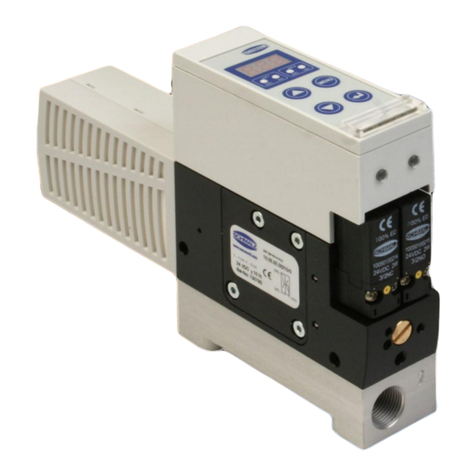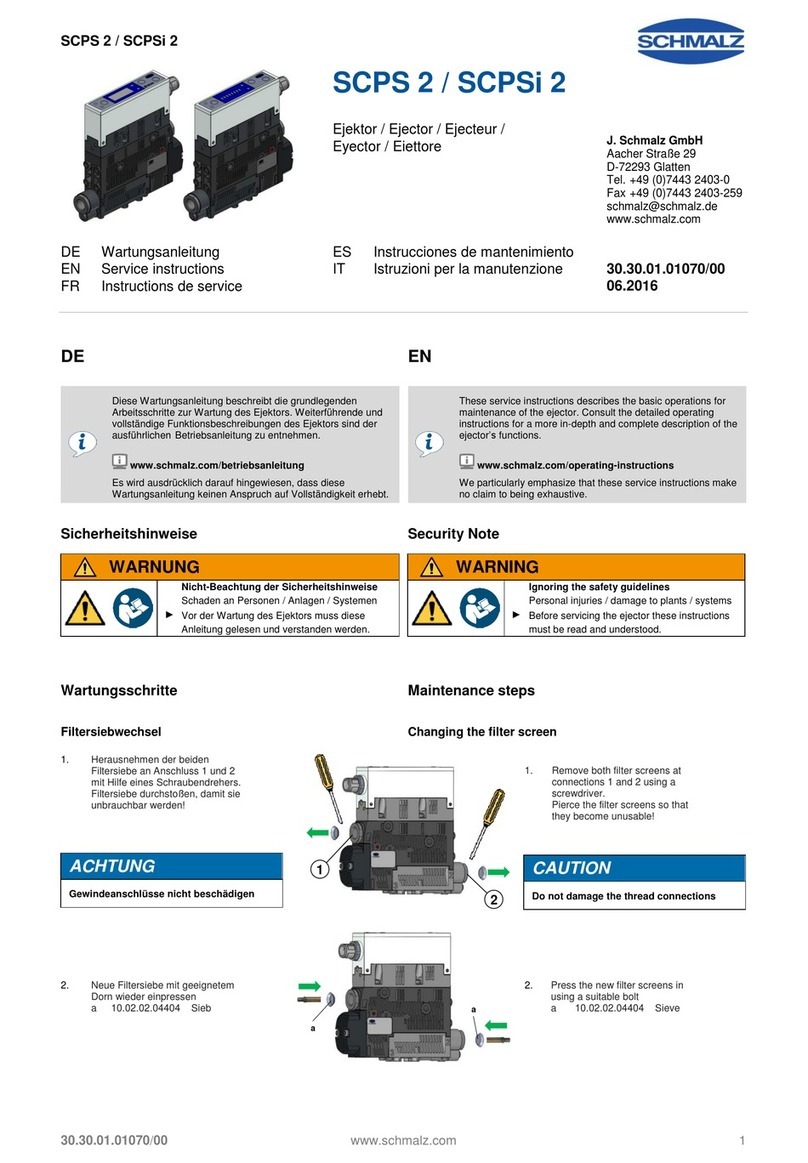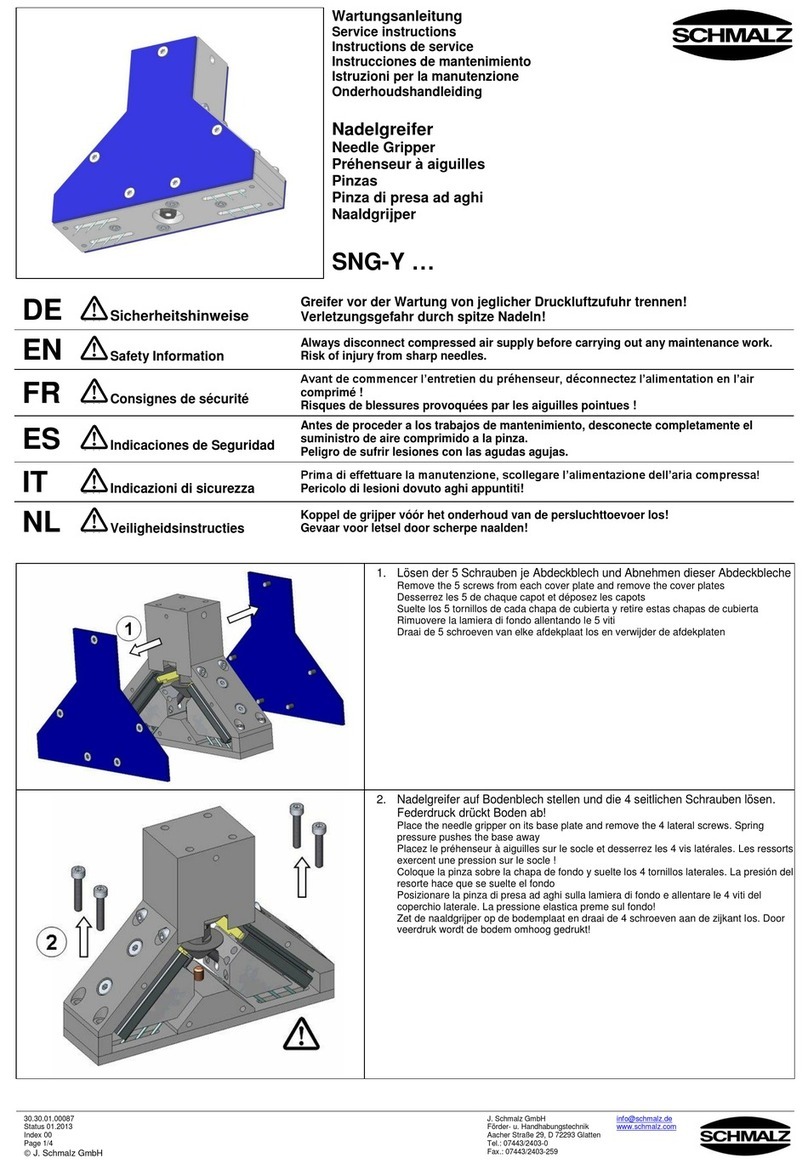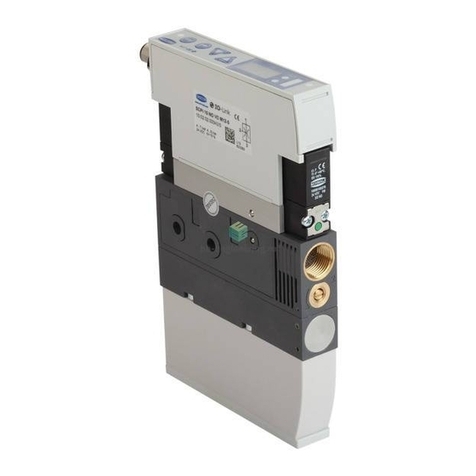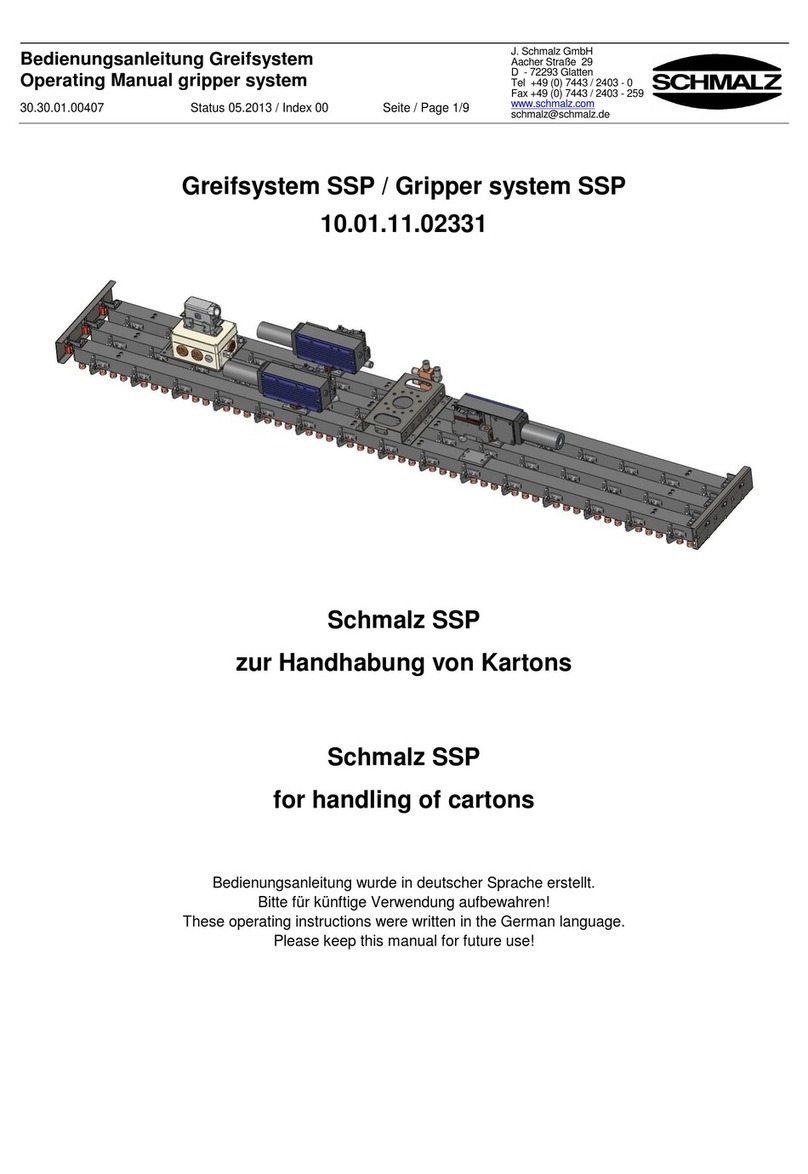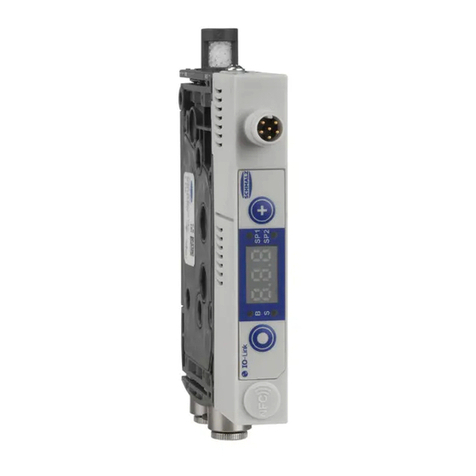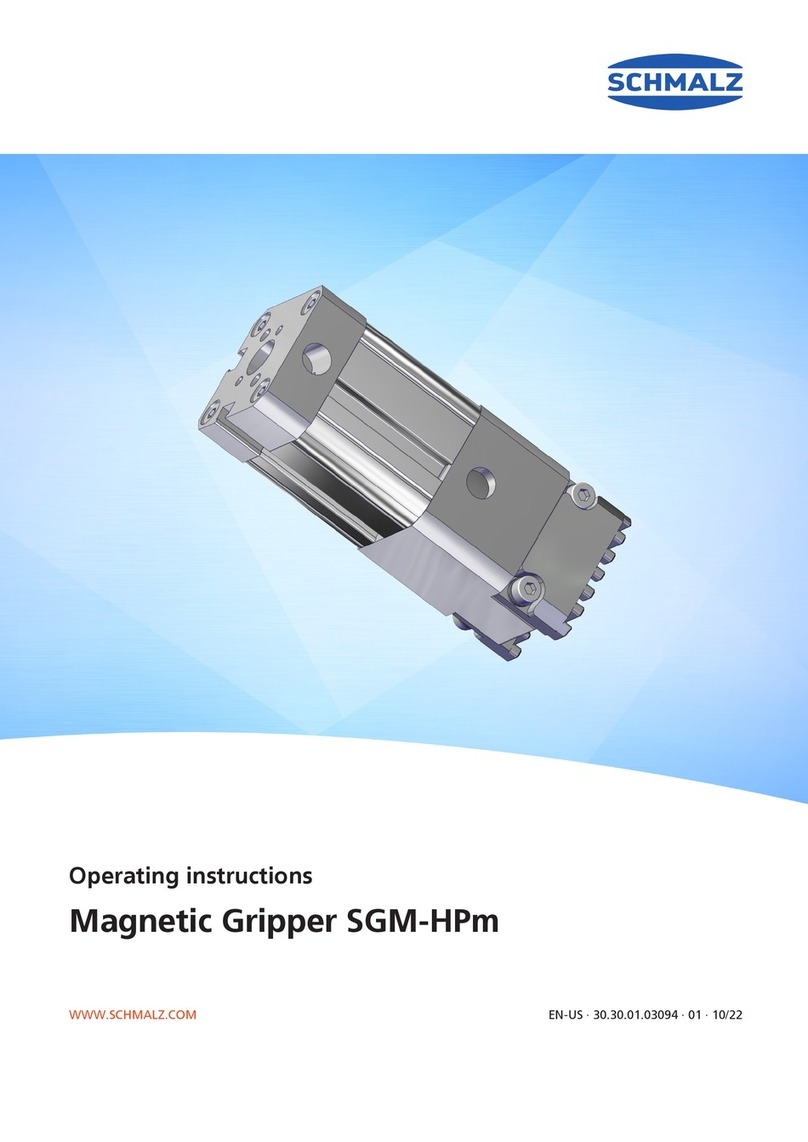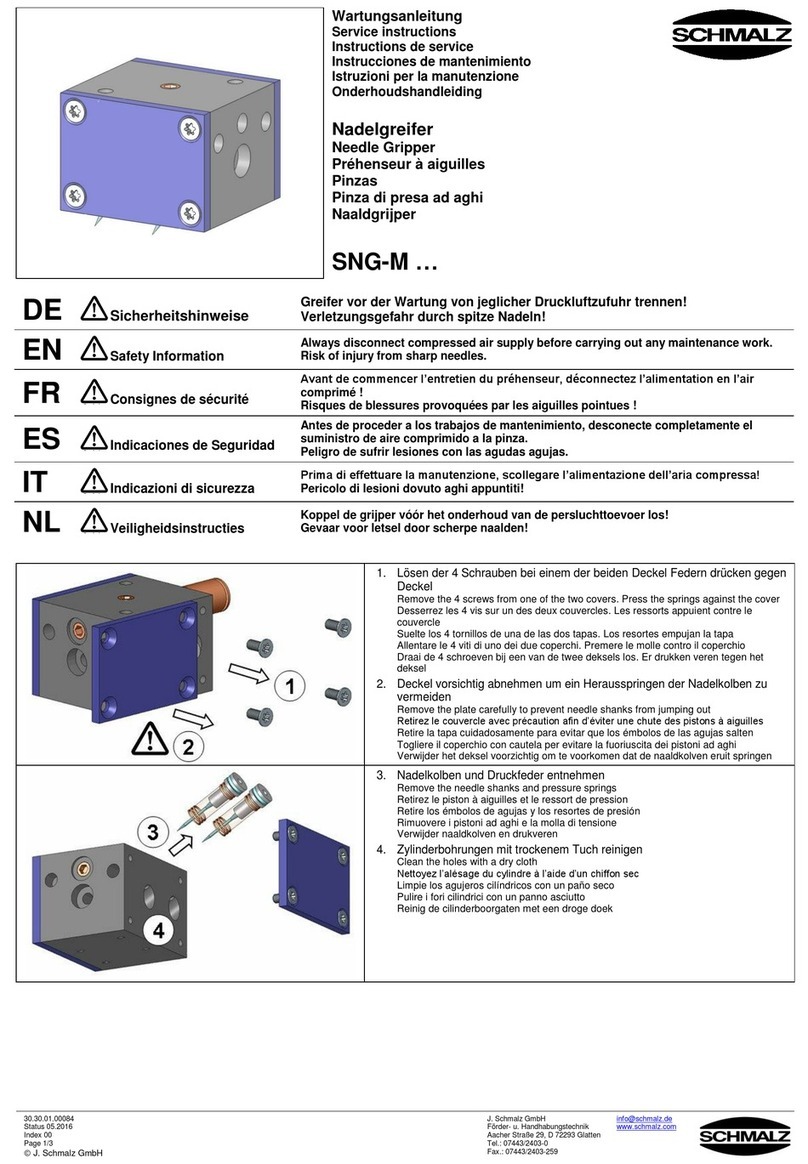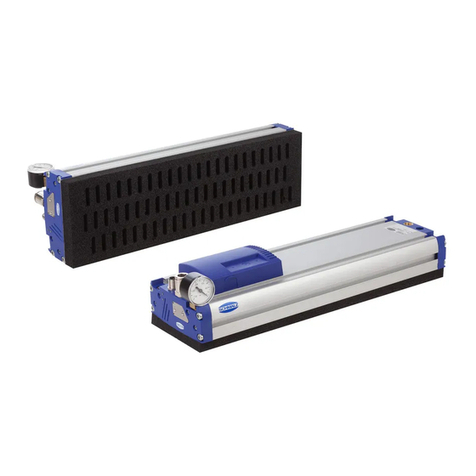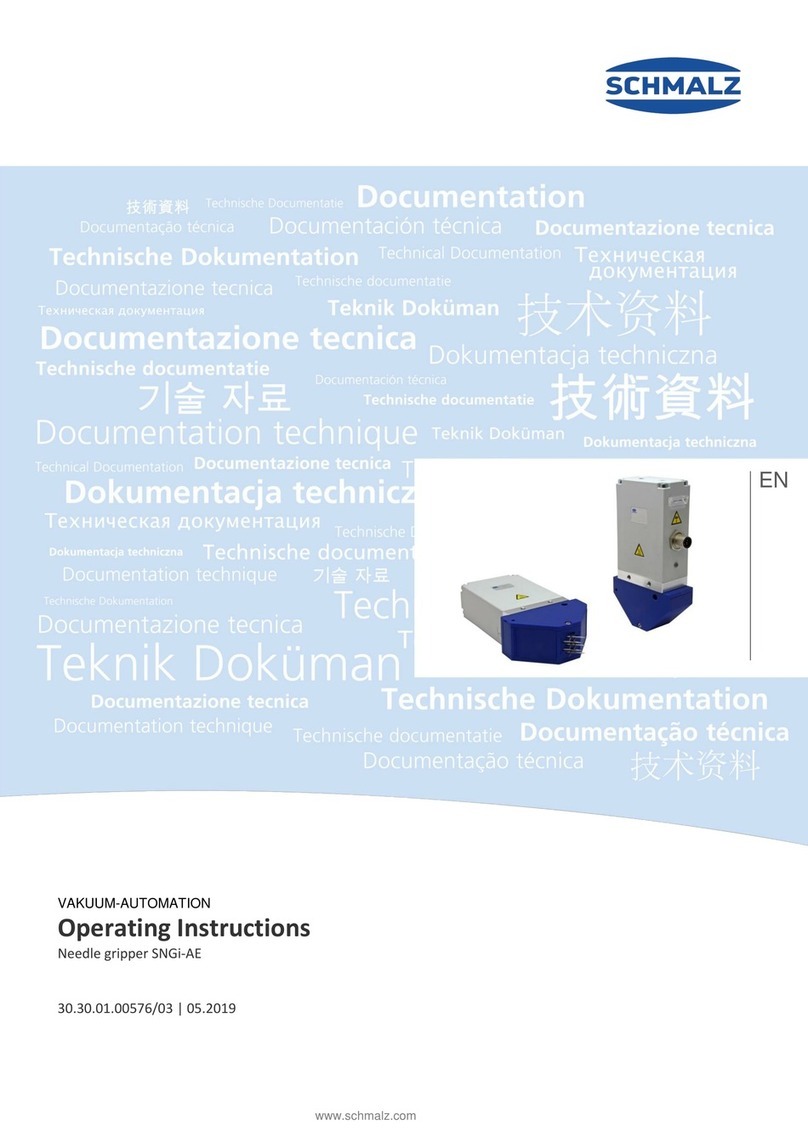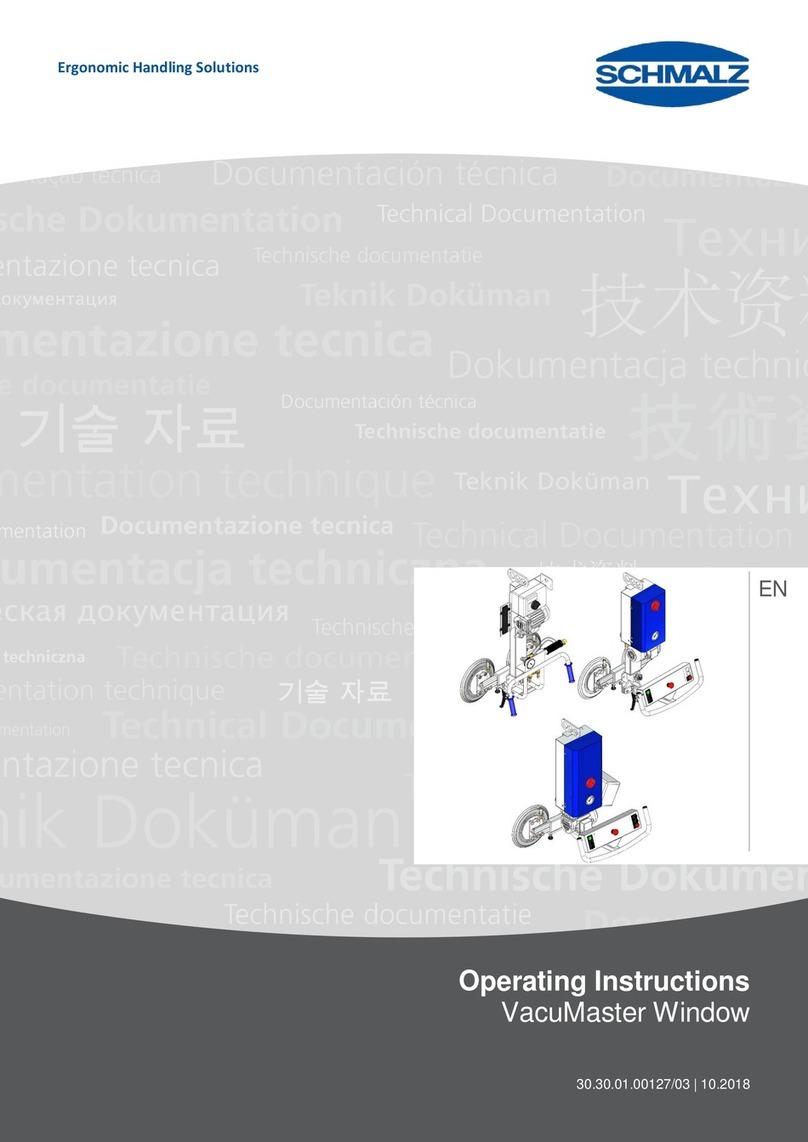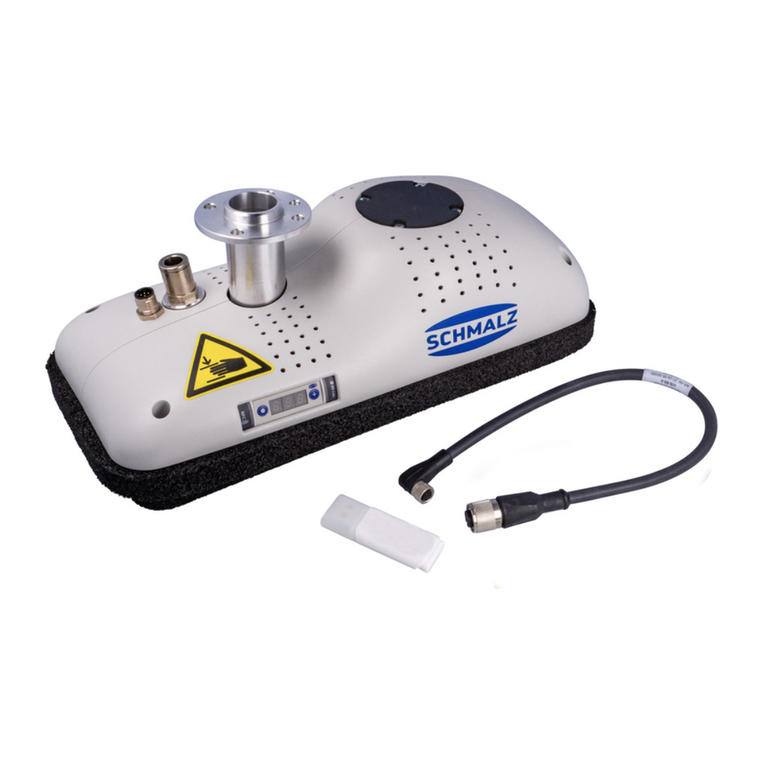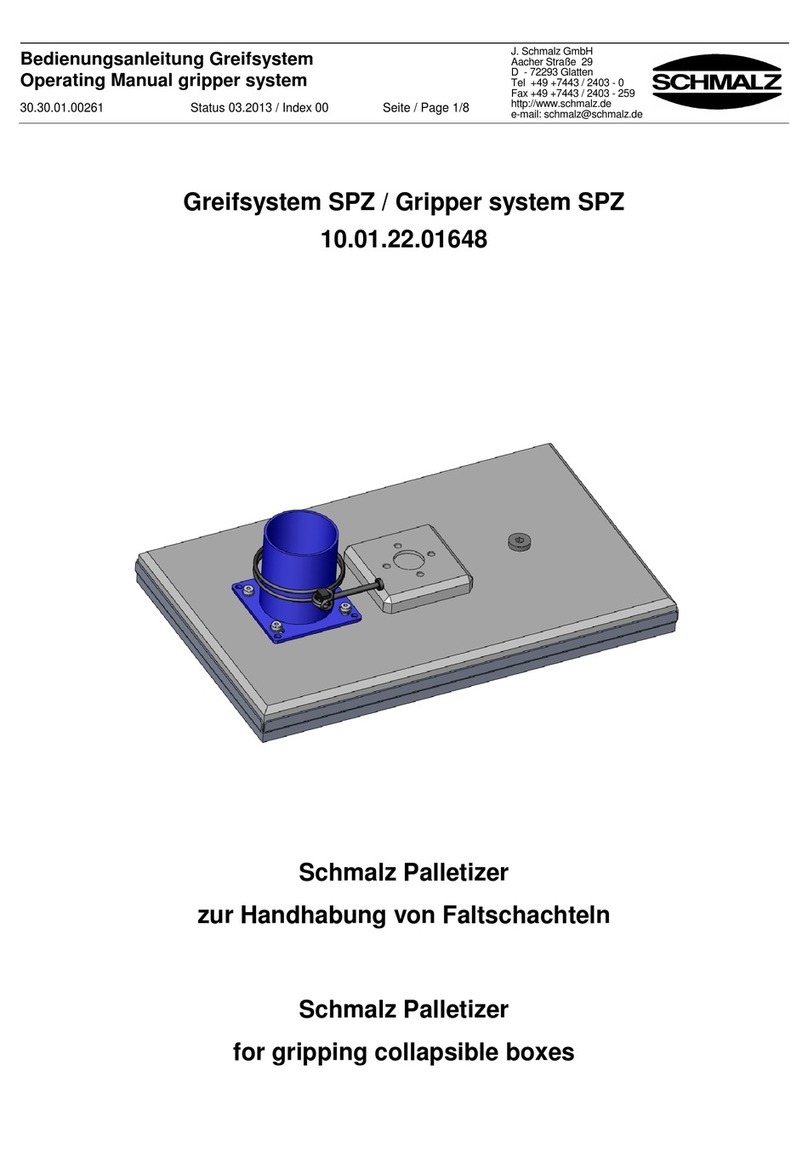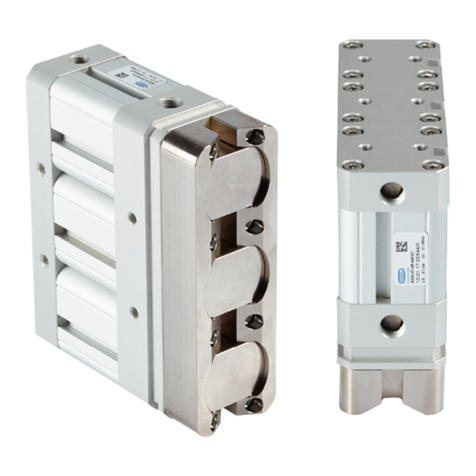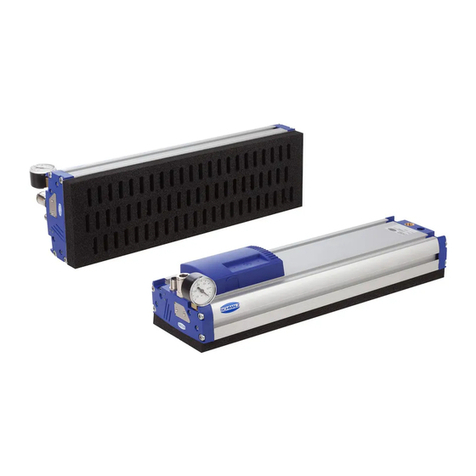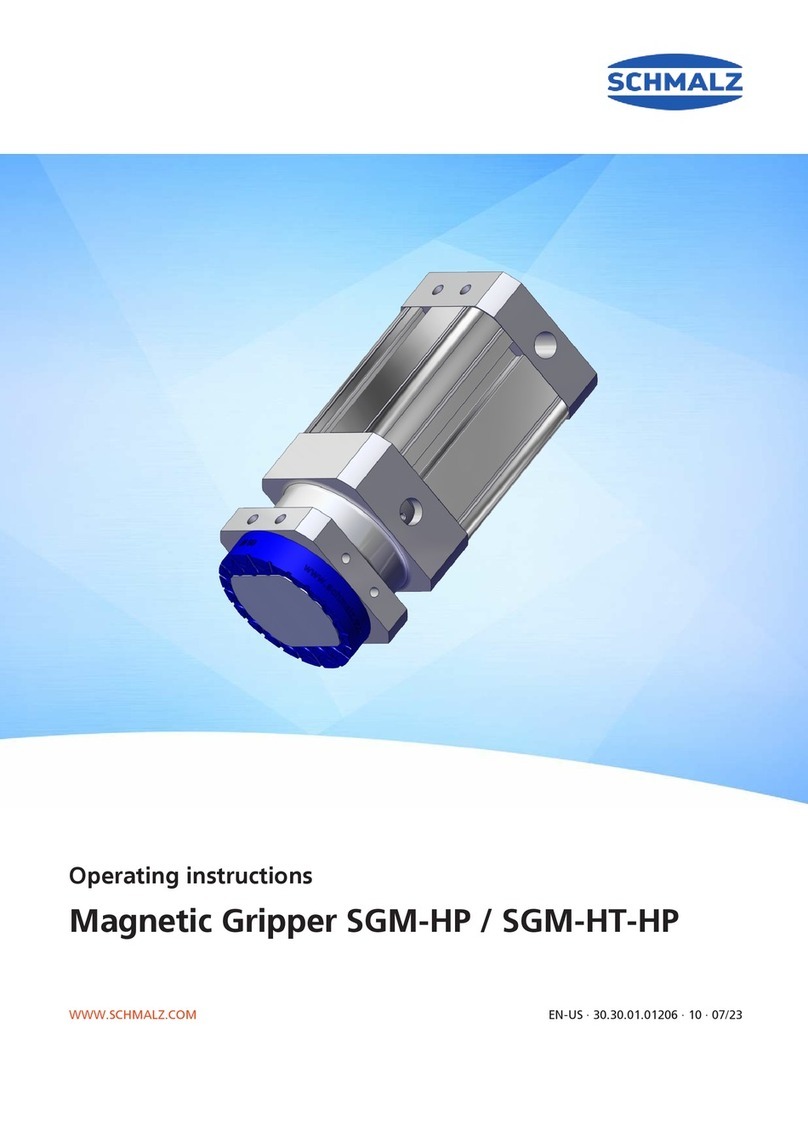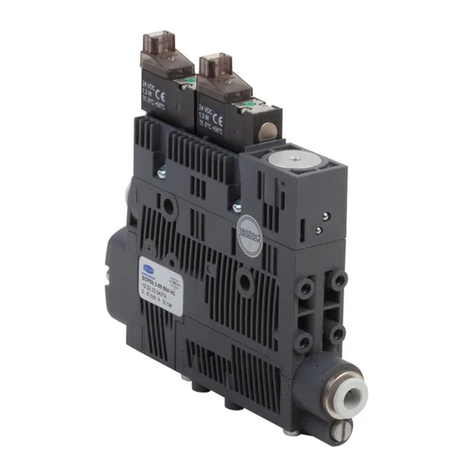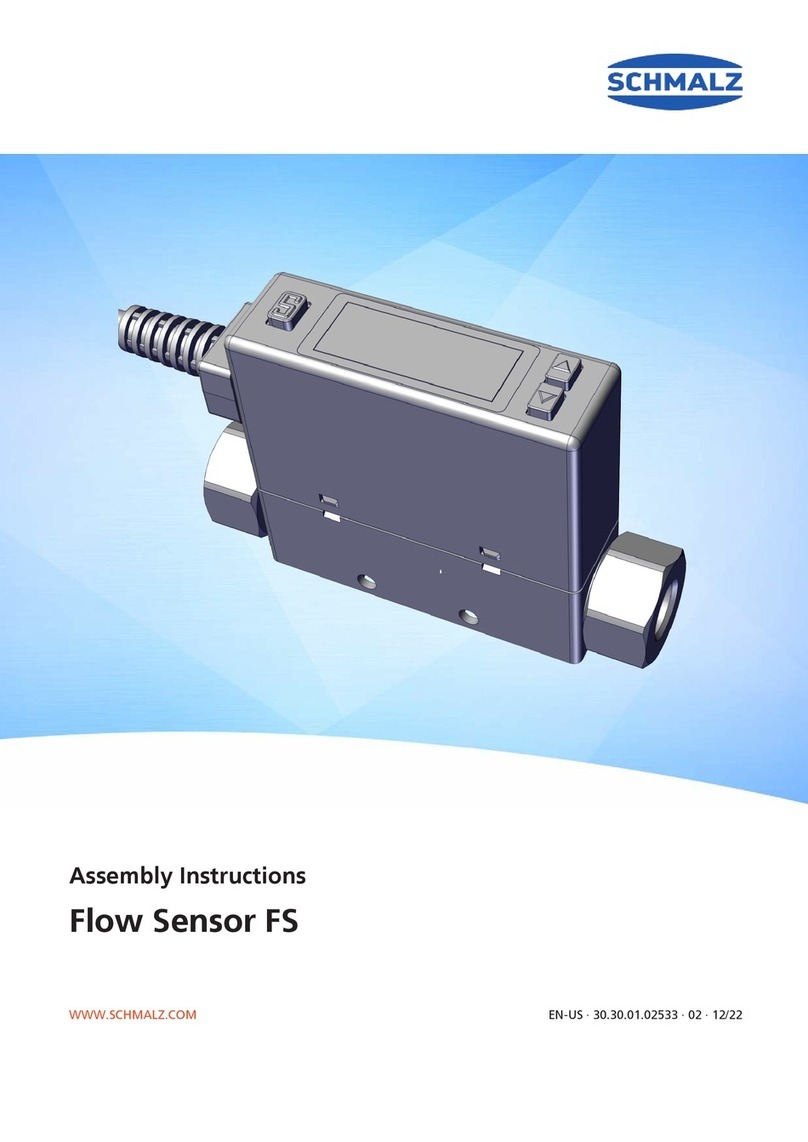
7 Specifications for Use
CAUTION
During machining, dust is released into the environment and can enter the respiratory tract.
Danger to health
4Use suction equipment or cover the machining area to ensure that no dust is released into the
environment.
4If necessary, wear a breathing mask in accordance with class FFP1 or higher.
1. Monitor the vacuum value that is reached as close as possible to the vacuum block (e.g. with a gauge).
2. Ensure that the operating vacuum is ≥ 600 mbar before machining the workpiece.
3. Before each machining process, clean chips and dust from the nesting table and vacuum block to achieve the
required accuracy and adhesion as well as to prevent leakage.
4. Check the sealing gaskets for wear and replace if necessary.
8 Using the Vacuum Blocks
For each suction process, check whether all the vacuum blocks used are securely fixed on the sealing plate and
whether the workpiece is also sufficiently fixed before starting the machining operation.
The vacuum block must only be placed on the sealing plate with the friction pad facing downwards and with the
vacuum switched off.
Only spare and wear parts approved by J. Schmalz GmbH may be used.
1. When the operating vacuum is switched on, the area between the vacuum block and the sealing plate is evac-
uated, thus fixing the vacuum block in place.
2. When the plate-shaped workpiece is placed on the suction plate, the touch valve of the vacuum block is actu-
ated and the vacuum circuit is opened, thus fixing the workpiece.
Please note that the suction plate must be completely covered.
3. Before starting the machining process, check that the vacuum block and workpiece are securely fastened.
4. The workpiece can be machined.
5. The workpiece is released from the vacuum block and the vacuum block is released from the sealing plate
when the operating vacuum is switched off.
6. The workpiece can now be removed.
9 Machining Limitations
WARNING
The workpiece comes loose during machining and is flung away by the machine.
Risk of injury from flying parts.
4Ascertain the maximum machining parameters and observe them.
The holding force is limited, meaning that it can withstand machining forces only up to a certain point. Accord-
ingly, the operator of the vacuum block is obligated to establish for themselves (by experiment, slowly and care-
fully increasing the machining forces) the optimal settings and number of vacuum blocks necessary to ensure that
the workpiece does not slip or even come loose during the machining process.
This procedure should be performed in particular for new workpieces that have never been machined before or for
uncertain cases with regard to the holding force.
Schmalz assumes no liability for damages resulting from slippage or release of workpieces due to faulty adjustment
of machining parameters.
6 / 8 EN-US · 30.30.01.02386 · 00 · 04/20
